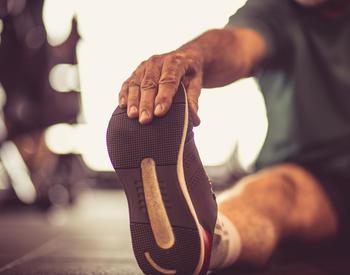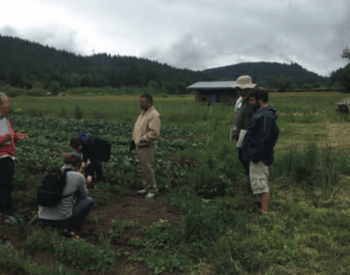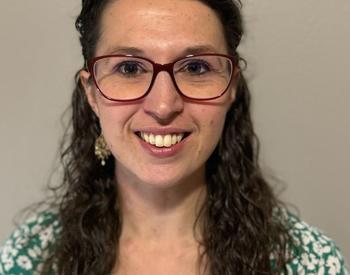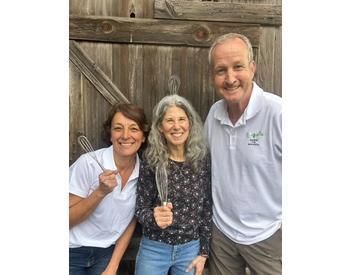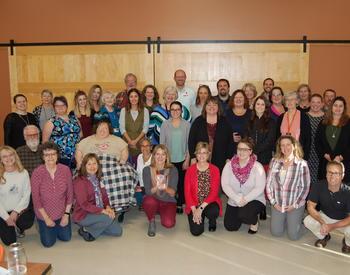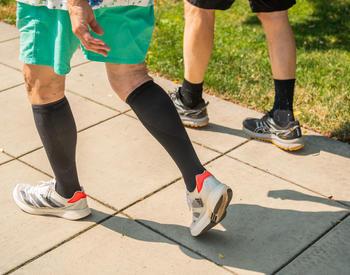The misuse of prescription opioids is a crisis that affects every region of the United States and has become more severe in the past decade. According to the CDC, nearly 75% of drug overdose deaths in 2020 involved an opioid, and death rates involving prescription opioids increased by 17% from 2019 to 2020.
But what many people are less aware of is that the United States is also experiencing a crisis involving people living with chronic pain. More than 20% of American adults suffer from pain every day or most days, according to the 2019 National Health Interview Survey. People who must deal with daily pain on a long-term basis often suffer loss of income, depression, social isolation, and lower quality of life. The pain crisis also places a heavy economic burden on the nation’s healthcare system.
The two crises are closely interwoven because opioid prescriptions are generally the first option for physicians treating their chronic pain patients. Long-term opioid use carries high risk of addiction, misuse and overdose. But in addition to these significant health risks, a growing body of medical and public health research has also found that opioid therapies, while they can play an important role in the treatment of acute short-term pain, are actually not very effective for the long-term treatment of chronic, continuing pain.
Many people with daily chronic pain who are treated with opioids are highly motivated to reduce their dependence on opioids but find it difficult to do so because of fear that their pain level will increase. Therefore, in recent years there has been strong interest among healthcare providers and public health researchers in developing alternative, non-pharmacological pain therapy strategies. These strategies include psychological approaches such as:
- Cognitive-behavioral therapy
- Manual therapies such as massage and acupuncture
- Movement-oriented approaches such as yoga and exercise
- Mindfulness and meditation
- Nutrition
Typically, these treatments do not eliminate patients’ chronic pain but they can enable patients to manage their pain psychologically, live with it more actively and improve their quality of life.
Clinic study of non-pharmacological chronic pain programs
Clinics that teach these strategies are still not widely available, but in northwest Oregon, several non-pharmacological pain clinics were established by the Columbia Pacific Coordinated Care Organization, which delivers healthcare in Clatsop, Tillamook and Columbia counties.
The clinics’ program consists of weekly three-hour classes for 10 weeks, offering a combination of approaches taught by a licensed mental health provider and a movement instructor. The program includes cognitive-behavioral therapy, yoga and other forms of movement therapy, relaxation techniques, nutrition education and other strategies.
A team of researchers from OSU’s School of Social and Behavioral Health Sciences studied these clinics to try to understand the clinics’ goals and the program’s benefits to patients and to hear patients describe their clinic experiences.1
The study was a qualitative evaluation, concentrating on hearing from clinic staff members and patients in their own words. For each clinic, the research team conducted individual interviews with staff members and focus group interviews with current and former patients. The interviews delved into questions about how the clinics operate, what benefits clinic patients receive, what factors are associated with program success for individual patients and how the clinic program is coordinated with patients’ other health care and their primary care providers.
Highlights of findings from the interviews
First, the clinics’ stated primary goal was to improve patients’ quality of life, while the reduction of opioid use was a secondary goal that was driven by patients individually. Many patients reported that this proved to be a successful strategy for them, helping them to reduce their opioid use though not necessarily eliminating it entirely. However, patients also reported that their primary care providers were not always clear about this approach and the clinic goals.
Second, patients reported that they experienced a variety of program benefits, which included:
- Skills in pain self-management
- Reduction of opioid use
- Improved quality of life
- Increased physical mobility and activity
- Reduction of social isolation
- Greater ability to cooperatively manage their own care with their healthcare providers.
However, both staff and patients emphasized that in order to benefit from the program, patients needed to be willing to take an active approach to living with and managing their own pain, rather than passively expecting their doctors to eliminate their pain for them through drugs or other treatments. As one patient described, ”The program isn’t going to end your pain…What it’s going to do is help you deal with that pain where you can live with it as part of your life.”
Third, patients reported that their own primary healthcare providers were often unclear about the goals and operations of the clinics. Most notably, many providers did not realize that the clinics were not primarily focused on opioid reduction. The lead clinicians in the three clinics reported making ongoing attempts to coordinate care with their patients’ primary providers but in most cases received little response. The interviews revealed that the delivery of patient care would be enhanced by better integration between the clinics and patients’ overall medical care.
The study’s results provide important supporting evidence that nonopioid pain management strategies can be successful for many chronic pain patients by helping them to manage their pain and live more active lives, and in many cases to reduce their dependence on opioids. Programs that teach those strategies serve a vital function in communities and help a segment of our population that is often overlooked – people who live with daily chronic pain.
More generally, health care professionals need better training in evidence-based alternatives to opioid pain therapies, and pain self-management programs need to become more widely available for the millions of Americans who could benefit from them. The Extension system can play an important educational role in connecting pain patients to such programs and promoting communication between pain management clinics and health care providers.
- 1Marc Braverman, an Extension evaluator in OSU’s Family and Community Health program, was a co-lead investigator on the study. The study was published in the February 2023 issue of the American Journal of Health Promotion.





